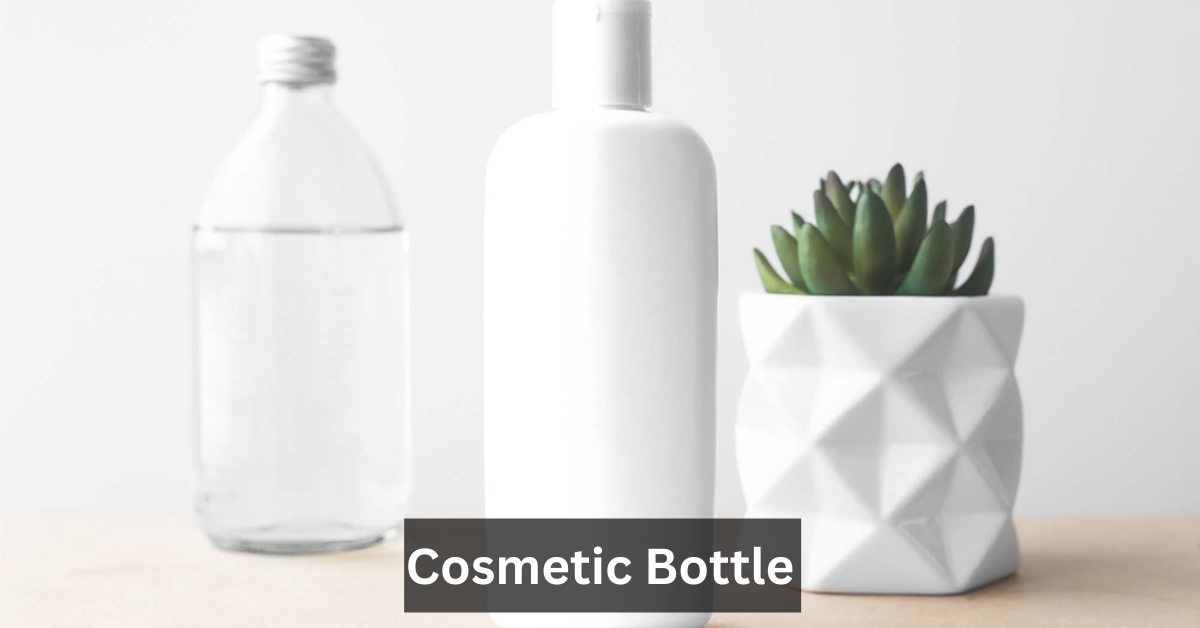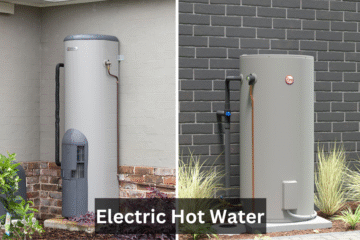A Cosmetic Bottle safely stores and dispenses skincare items like serums, lotions, oils, and creams with both hygiene and visual appeal. As the demand for personal care items grows globally, the Cosmetic Bottle has become a crucial element in beauty packaging. From luxurious glass vessels to eco-conscious biodegradable options, the design, material, and functionality of a Cosmetic Bottle directly influence consumer behavior and brand perception. Whether it’s holding a rejuvenating serum, a fragrant mist, or a nourishing lotion, the Cosmetic Bottle is a silent brand ambassador, embodying quality, trust, and aesthetics.
In the cosmetic packaging industry, the value of presentation is paramount. Top cosmetic brands like Estée Lauder and L’Oréal invest millions into designing and producing their signature Cosmetic Bottles, understanding that packaging communicates their brand story. A well-crafted Cosmetic Bottle ensures safety, boosts user experience, and elevates the product’s shelf appeal—making it an indispensable part of the cosmetics business.
Types of Cosmetic Bottles
Glass Cosmetic Bottles
Among all options, the glass Cosmetic Bottle stands out for its timeless elegance and superior protection. Particularly favored in the luxury cosmetic market, glass bottles—especially frosted glass bottles—offer a refined, upscale feel. They protect delicate formulas from UV rays and oxidation, making them ideal for essential oils, serums, and perfumes. Consumers often associate glass packaging with quality and purity, adding perceived value to the product inside.
Plastic Cosmetic Bottles (PET, HDPE)
For mass-market appeal and practical applications, plastic Cosmetic Bottles—especially those made from Polyethylene Terephthalate (PET) and High-Density Polyethylene (HDPE)—are widely used. These materials are lightweight, shatterproof, and fully recyclable, aligning well with global trends in sustainable cosmetic packaging. A PET bottle is typically transparent and glossy, suitable for showcasing vibrant formulas, while HDPE bottles are opaque and offer robust chemical resistance.
Airless Cosmetic Bottles
An airless Cosmetic Bottle is a marvel of modern packaging. Utilizing airless pump technology, these bottles prevent contamination and extend product shelf life by keeping air out. They are ideal for organic, sensitive formulations and are becoming a preferred choice in skincare packaging. The design also allows for almost complete evacuation of the product, reducing waste.
Acrylic Bottles
Acrylic Cosmetic Bottles offer a high-end look without the fragility of glass. They’re often used for makeup bottles and luxury creams due to their clear, glossy appearance and durable structure. Acrylic bottles support detailed customization and 3D cosmetic packaging design, helping brands showcase exclusivity.
Refillable and Reusable Bottles
A new wave of eco-conscious consumers has given rise to the refillable Cosmetic Bottle trend. These bottles are designed for multiple uses and are often featured in zero-waste stores and refill stations. This approach not only reduces plastic waste but also builds long-term brand loyalty.
Uses of Cosmetic Bottles by Product Type
Lotion and Cream Bottles
The Cosmetic Bottle used for lotions and creams must offer ease of use and hygiene. Lotion bottles typically include pump dispensers, allowing controlled usage while keeping the product clean and sealed. Brands use ergonomic designs and airless pumps for cream bottles to combine luxury with functionality.
Serum and Oil Bottles
Serum bottles often require precise dosage, making dropper bottles an ideal choice. For facial oils, glass Cosmetic Bottles are widely used to maintain formula integrity. The dropper mechanism also enhances user control and ensures minimal product wastage.
Perfume and Mist Bottles
When it comes to perfume bottles, aesthetics meet engineering. These Cosmetic Bottles are designed with spray nozzles and tight-seal caps to preserve scent while offering an artistic visual experience. Their appearance often becomes part of the consumer’s vanity decor.
Foundation and Makeup Bottles
Makeup bottles, especially for liquid foundations, need to be both attractive and efficient. Pump systems are common in these Cosmetic Bottles, offering a hygienic application and consistent dosage. These bottles are typically made from acrylic or PET plastic for durability and cost-efficiency.
Travel-Size Cosmetic Bottles
Travel-size cosmetic containers cater to modern lifestyles. Compact, leak-proof, and airline-compliant, they allow users to carry their favorite products on the go. These Cosmetic Bottles are essential for brands looking to target frequent travelers and sample distribution.
Design and Functionality of Cosmetic Bottles
Bottle Shapes and Sizes
From tall cylindrical shapes to square minimalist bottles, the shape of a Cosmetic Bottle communicates purpose and appeal. Size matters too—small 15ml bottles are perfect for serums, while 250ml containers suit lotions and body washes. These dimensions must align with both branding and practicality.
Closures: Pumps, Droppers, Spray Nozzles, Caps
Functionality in Cosmetic Bottles is deeply influenced by closure types. Whether it’s a cosmetic pump bottle, roll-on bottle, or twist cap, closures define ease of use and product protection. Innovative mechanisms like dual-phase pumps and safety locks are also gaining popularity.
Labeling, Printing, and Branding Options
In today’s competitive market, a Cosmetic Bottle isn’t complete without outstanding branding. Labels, screen printing, and embossing help brands tell their story. High-resolution graphics and eco-friendly bottle labels add sophistication and sustainability to the design.
Ergonomics and User Experience
The Cosmetic Bottle must feel intuitive. A firm grip, smooth pump action, and one-handed usability are subtle yet critical factors. Great packaging enhances daily rituals and fosters emotional connections between the product and user.
Materials Used in Cosmetic Bottles
Glass vs. Plastic: Pros and Cons
When choosing a Cosmetic Bottle, the debate between glass and plastic arises. Glass is recyclable, non-toxic, and luxurious—but it’s heavier and breakable. Plastic is cost-effective, lightweight, and versatile—but often seen as less premium. Many brands now opt for hybrid packaging to balance performance and aesthetics.
PET and HDPE Plastic Bottles
PET bottles offer transparency and durability, while HDPE bottles are more robust and opaque. Both meet cosmetic manufacturing standards and are widely accepted under FDA packaging guidelines. They are also part of the movement towards recyclable materials in cosmetic packaging.
Sustainable and Biodegradable Options
From corn-based bioplastics to bamboo fibers, biodegradable plastic alternatives are transforming the Cosmetic Bottle landscape. These sustainable innovations are supported by organizations like the Sustainable Packaging Coalition and resonate strongly with conscious consumers.
Safety and Regulatory Compliance (FDA, EU)
Packaging must comply with strict FDA and EU cosmetic packaging rules. This includes using non-toxic materials, proper labeling, and tamper-proof seals. Every Cosmetic Bottle must pass quality checks to ensure safety and trustworthiness.
Customization and Private Label Solutions
Custom Cosmetic Bottle Design
Brands seeking uniqueness turn to custom Cosmetic Bottles. Whether it’s a sculpted silhouette or embossed logo, customization enhances recognition and consumer loyalty. Personalized packaging also aligns with luxury and niche markets.
Branding Through Packaging
Cosmetic branding begins at first glance. A visually stunning Cosmetic Bottle with smart design elements can differentiate a product instantly. It turns a utilitarian item into a brand icon.
MOQ and Wholesale Cosmetic Bottles
Startups often begin with wholesale Cosmetic Bottles that offer low minimum order quantities (MOQ). This helps test the market affordably while ensuring professional-grade packaging.
Cosmetic Bottle Manufacturing Process
From Design to Mass Production
Each Cosmetic Bottle starts as a design sketch or CAD rendering, then proceeds to mold-making and manufacturing. This process ensures consistency and customization at scale.
Injection Molding vs. Blow Molding
Injection molding is used for caps and small closures, while blow molding forms the main bottle body. The choice of technique affects shape, strength, and aesthetics.
Quality Control and Safety
Strict quality control ensures every Cosmetic Bottle meets durability, leak-proofing, and aesthetic standards. Reputable Cosmetic Bottle manufacturers adhere to ISO and GMP guidelines.
Trends in Cosmetic Bottle Packaging
Minimalist and Aesthetic Designs
Clean, modern, and eco-conscious designs dominate. Minimalist Cosmetic Bottles align with today’s “less is more” philosophy and appeal to upscale and health-conscious markets.
Smart Packaging and Tech Features
Smart Cosmetic Bottles are now embedded with QR codes and NFC chips, offering product information, tutorials, or loyalty rewards. It enhances user interaction and adds high-tech appeal.
Eco-Friendly and Refillable Trends
The rise of refillable Cosmetic Bottles reflects the shift toward sustainable living. Many brands now offer return and refill programs, turning packaging into a reusable asset.
Conclusion
The Cosmetic Bottle is no longer an afterthought—it’s the bridge between product, brand, and consumer. Whether you’re launching a serum line or entering the luxury skincare market, the right Cosmetic Bottle can define your success. As packaging technologies evolve and sustainability becomes paramount, investing in a high-quality, eco-friendly, and functional Cosmetic Bottle is both a smart business move and a responsible choice.
Frequently Asked Questions
Are Cosmetic Bottles reusable?
Yes, many Cosmetic Bottles—especially glass and airless types—are designed to be refillable and reusable for sustainability purposes.
What materials are Cosmetic Bottles made from?
Cosmetic Bottles are commonly made from plastic (PET, HDPE), glass, aluminum, or eco-friendly biodegradable materials.
Where can I buy Cosmetic Bottles in bulk?
You can purchase Cosmetic Bottles wholesale from packaging suppliers, manufacturers, or online platforms like Alibaba, Uline, and SKS Bottle.
What is the difference between airless and regular Cosmetic Bottles?
Airless Cosmetic Bottles prevent air exposure, preserving the product longer, while regular bottles may allow air in, reducing shelf life.
Stay in touch to get more updates & alerts on Erome! Thank you



